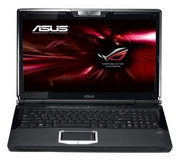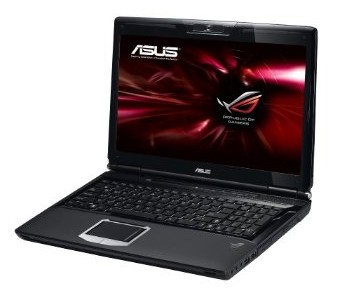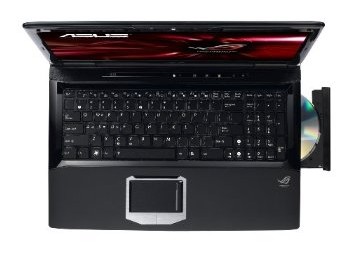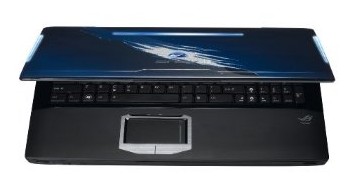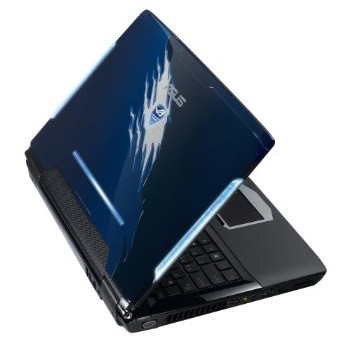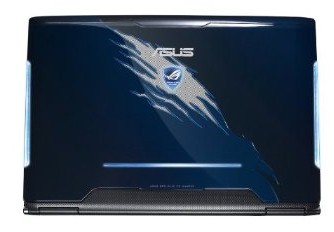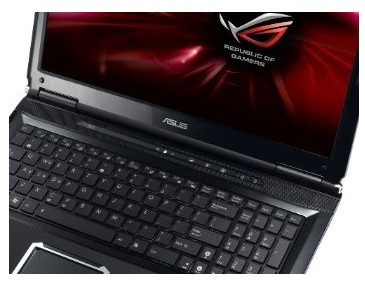Asus G51J-A1
Specifiche tecniche
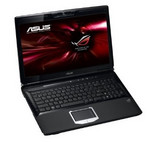
Price comparison
Media dei 3 punteggi (dalle 5 recensioni)
recensioni per Asus G51J-A1
Sorgente: Laptop Mag
 EN→IT Archive.org version
EN→IT Archive.org versionThis Core i7 gaming notebook gives you a lot of power and a full HD screen for a good price.
If you want to blow away zombies but you’re not one of the beneficiaries of a trust fund or Wall Street bonus, you’ll find that the $1,499 G51J-A1 is every bit as capable as top-end rigs. The Alienware M15x offers slightly better performance and cool extras like customizable lighting, but it costs $1,874 when similarly configured to the G51J-A1. In other words, this rig is a killer value.
Singola recensione, disponibile online, Lungo, Data: 11/20/2009
Valutazione: Punteggio totale: 80%
Sorgente: Hot Hardware
 EN→IT Archive.org version
EN→IT Archive.org versionAll in all, the G51J-A1 is great at being itself, but not so great at being your "do-it-all" 15" notebook. The keyboard is just too lackluster to be used for daily typing chores, note taking, etc., and the battery is too poor to use on the road for any real length of time. It's a portable gaming rig in a form factor that's smaller than those gigantic 17" and 18.4" machines out there and that's about it.
Singola recensione, disponibile online, Lungo, Data: 11/09/2009
Valutazione: prezzo: 90% prestazioni: 95% mobilità: 40% emissioni: 40%
Sorgente: Computer Shopper
 EN→IT Archive.org version
EN→IT Archive.org versionGamers are known to plunk down wads of cash for their battle gear, but not everybody has thousands of dollars to spend on a top-of-the-line 3D notebook. Enter the Asus G51J-A1, a relatively affordable ($1,499) 15-inch, 7.3-pound notebook featuring an Intel Core i7 processor and a stunning 1080p high-def display. This slick-looking system may be more travel-friendly than the big rigs, but it doesn’t offer the kind of 3D performance that gamers crave. Offering more portability than its desktop-replacement brethren, the Asus G51J-A1 delivers good productivity performance, but its gaming performance is subpar.
Singola recensione, disponibile online, Lungo, Data: 11/01/2009
Valutazione: Punteggio totale: 72%
Sorgente: c't - 9/10

Singola recensione, , Lungo, Data: 04/01/2010
Valutazione: prestazioni: 85% mobilità: 30% ergonomia: 70% emissioni: 30%
Sorgente: Portables4Gamers
 FR→IT Archive.org version
FR→IT Archive.org versionSingola recensione, disponibile online, Lungo, Data: 12/06/2009
Valutazione: Punteggio totale: 40%
Commenti
NVIDIA GeForce GTX 260M: La NVidia GeForce GTX 260M è la scheda grafica di fascia alta della serie 200M e si basa sul core G92b. Di conseguenza, il chip è un 9800M GTX con valore di clock leggermente superiori 550/1375/950 contro 500/1250/800. E' realizzata in tecnologia 55nm. Pertanto non è simile alla Desktop GTX 260 ma in qualche modo alla 9800 GT.
Come tutte le schede con capacità DirectX 10, la GeForce GTX 280M gestisce le immagini 3D utilizzando la "Unified Shaders". Non esistono più shaders pixel- e vertex dedicati ma 112 processori chiamati stream che fanno il lavoro grafico (fatto in precedenza dagli shaders pixel and vertex shaders). Inoltre, le unità shader hanno clock superiori rispetto al chip (1375 MHz).
Ridurre la distanza delle Schede Grafiche per gli utenti che vogliono utilizzare il videogiochi. I nuovi giochi dovrebbero funzionare su queste schede, ma con riduzione dei dettagli e risoluzione mediocre.
>> Ulteriori informazioni le potete trovare nel nostroConfronto delle schede grafiche e nella nostra Lista dei Benchmark.
720QM: Il Core i7-720QM è il Core i7 Quad più lento del 2009 ed ha un clock tra 1.6 e 2.8 GHz (grazie al Turbo Mode). Di conseguenza, il processore combina i vantaggi delle veloci CPUs single core e delle lente CPUs quad-core. Rispetto alle più veloci CPUs Core i7, la 720QM ha solo 6MB di L3 Cache.
>>Ulteriori informazioni le potete trovare nel nostroConfronto dei processori per portatili.




